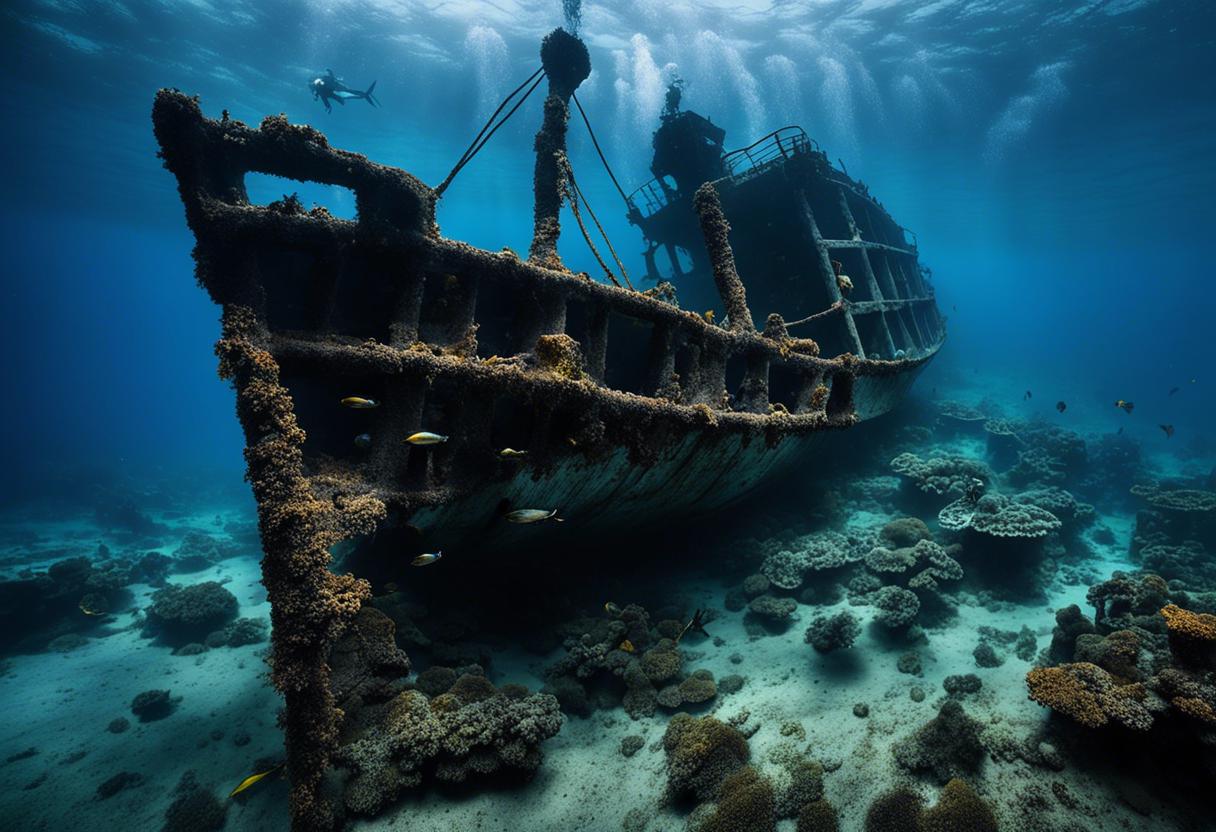The wreckage of the renowned Kildare-born Antarctic explorer, Ernest Shackleton’s ship has been discovered off the Labrador coast, Canada, according to the search team’s announcement. The Quest, a schooner-rigged steamship, was found during its 1962 seal hunting expedition and it offers a final link to the “stirring era of Antarctic exploration”, as described by the expedition leader, John Geiger. He further stated that the discovery of the Quest marks one of the concluding segments in the notable journey of Sir Ernest Shackleton.
Mr Geiger shared this information from the bridge of the Leeway Odyssey, the oceanographic research ship that had just arrived in St John’s port, Newfoundland following the Quest’s discovery 15 nautical miles offshore in 400m of water depth. It is noteworthy that the final docking place of the Quest is located about 12,000km (7,500 miles) from its position at the time of Shackleton’s death due to a heart attack onboard at Grytviken Harbour, South Georgia, on the 5th of January, 1922.
Shackleton, who was 47 years old at the time, had been on his way back to Antarctica seven years post his prior expedition which had almost resulted in disaster. Shackleton, originally from Kilkea near Athy in Co Kildare, was born in 1874 and relocated to London at the age of 10.
His family, the Shackletons, have a long-established heritage in Ireland, with the first family member, a Quaker preacher named Abraham, settling in the 1720s. Ernest Shackleton’s aspirations to be the first to cross the Antarctic continent by land in 1914 came unexpectedly after the expeditions of the Norwegian, Roald Amundsen, and the Englishman, Robert Falcon Scott, who had reached the South Pole only a few weeks apart, three years prior.
However, Shackleton’s expedition turned disastrous when his ship, the Endurance, got lodged in pack ice on the Weddell Sea leading Shackleton and his crew to camp on precarious ice floes. After being adrift for months, the Endurance was lost and Shackleton and his team had to navigate through the barren and unpopulated Elephant Island in lifeboats.
Shackleton, amidst dwindling hopes of salvation, embarked on a daunting 800-mile voyage across treacherous seas with five of his crew to the Georgia South whaling station in Grytviken. In four-months’ time, he successfully rescued the remainder of his crew stranded on Elephant Island. His effective leadership led to the survival of all of his 27-crew, distinguishing him amongst other explorers of the Antarctic heroic age. This was a time when explorers were often overpowered by the harsh weather due to lack of adequate equipment and supplies.
On a remarkable note, eight of Shackleton’s crew members even accompanied him on his next adventure despite the drawbacks of the ship, the Quest. This expedition vessel, being smaller than the Endurance, was originally constructed as a wooden Norwegian sealer in 1917, and was traditionally deemed uncomfortable for polar exploration according to an exhibit at the South Georgia Museum. However, the ship was also praised for its innovative features like a wireless radio gadget, electric lighting, a heated watchtower, a course-plotting device called an odograph, and even an Avro Baby aeroplane.
Following Shackleton’s demise, Frank Wild took the helm and the Quest ventured towards the Weddell Sea. Regrettably, the inadequately powered vessel battled with ice and its crew returned to the UK, dispirited, several months later. This journey heralded the end of the heroic era and the advent of a modern “mechanical age” of exploration which favoured technology including motor vehicles and aircrafts rather than sheer grit.
Yet, against all odds, the Quest remained operational over the years. It was used in an unsuccessful rescue operation for missing Norwegian explorer Amundsen in 1928. Later, the British explorer Gino Watkins took it on his 1930 British Arctic air route expedition aimed at charting an aerial course from the UK to Winnipeg. The vessel finally served as a minesweeper in the Caribbean during the Second World War.
The historic vessel known as Quest, once repurposed following the war and used for sealing in the Labrador Sea, met its end in May 1962 when it collided with ice and had it not been for the rescue operations, the crew could have perished. This year signifies a milestone as it marks the 150th birth anniversary of the famous Anglo-Irish explorer, Shackleton, who was born in County Kildare. His remarkable exploratory feats remain in the limelight even today after more than a hundred years since his demise.
In 2022, the shipwreck of the Endurance was uncovered 3,000 metres beneath the Weddell Sea. Amazingly, the freezing temperatures and lack of wood-consuming organisms helped preserve the wreck. The discovery ignited the curiosity of Shackleton enthusiasts globally, prompting them to turn their attention to Quest, impelling Mr Geiger to ponder on the whereabouts of Quest and whether it’s possible to locate it.
David Mearns, the director of the search and an experienced shipwreck hunter, who also played a significant part in the lengthy project to locate the Endurance, admitted that the initial phases of the search felt like solving a mystery. He was hopeful, though, betting there was a 70% chance they could find the shipwreck. Five days into the operation, a blip on the sonar equipment indicated the presence of a wreckage on the sea floor. Confirmation came from Mearns who mentioned that while the masts were destroyed as anticipated, the core structure remained untouched. In the coming months, the team is set to revisit the site to capture pictures of the wreckage.
Shackleton’s direct descendant, Alexandra Shackleton, expressed her approval towards this discovery. She made a poignant remark about how her grandfather initially wanted to involve Quest in a Canadian Arctic expedition but was denied support from Arthur Meighen’s Canadian government. In light of this, she finds it fitting that Quest’s journey culminated in Canadian waters. The information is sourced from Guardian.

